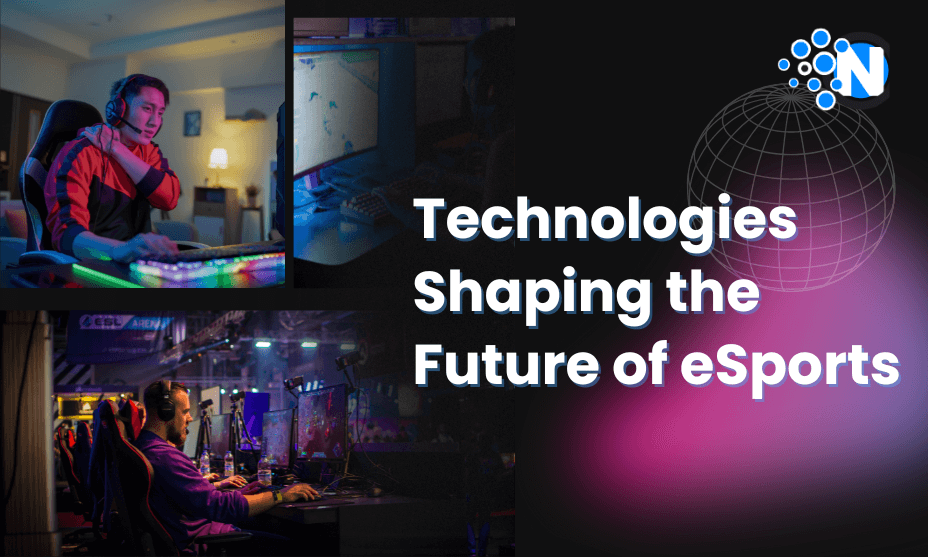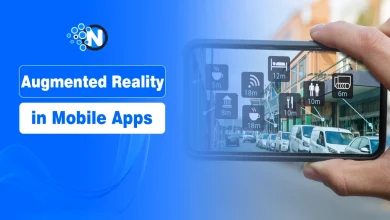Emerging Technologies Shaping the Future of eSports

eSports has grown beyond its niche and begun to become a major international event. As professional gamers compete in virtual arenas, millions of people watch, and sponsorships and prize pools grow to incredible heights. The industry is always changing, driven by the winds of technical innovation, much like the games themselves.
As technology advances, so too does the landscape of competitive gaming, with new tools and platforms like 1xbet continually emerging to enhance both player performance and viewer experience. Below, we will explore some of the emerging technologies that could completely change the eSports landscape in the future.
Virtual and Augmented Reality (VR/AR)
Imagine feeling the rush of excitement during a high-stakes first-person shooter match, or teleporting into the center of a tumultuous MOBA battle. VR and AR have the potential to completely change how we watch eSports.
VR Spectating: With the right technology, spectators may become fully immersed in the action. Imagine being with your favorite team and experiencing the joy of a victory celebration or the strain of a near miss. Virtual reality has the potential to produce immersive, 360-degree experiences that place you at the center of the action.
Improved Training: Virtual reality isn’t only for viewers. It might be an effective training aid for gamers who are professionals. Imagine refining reflexes in immersive locations, learning tactics against virtual opponents, and practicing in realistic simulations of various maps. VR training may be able to provide a degree of flexibility and intricacy that is just unmatched by conventional techniques.
AR Overlays: On the other side, augmented reality has the potential to improve the conventional broadcasting experience. Imagine having objective markers, health bars, and player metrics superimposed on the screen in real time to give players a better idea of how the game is supposed to go. Additionally, viewers could participate with the action in real time by voting on plays or accessing special information by using augmented reality (AR) to build interactive overlays.

Artificial Intelligence (AI) and Machine Learning (ML)
Though they’re already making their mark in the eSports industry, AI and ML are set to have a bigger impact soon. Here is how:
Enhanced Analytics: Artificial intelligence is capable of analyzing large amounts of historical player data, game dynamics, and match histories. For coaches and analysts, this can yield insightful information that will help them see patterns, anticipate opponent methods, and create effective game plans.
Personalized Training: Picture a training program driven by AI that adjusts to your unique requirements. ML algorithms have the ability to assess your gaming, identify your areas of weakness, and recommend personalized drills and exercises to help you get better. By taking a customized strategy, players may reach their maximum potential and transform the way they train.
Personalized Viewing Experiences: AI systems have the ability to give fans a more customized viewing experience. AI can highlight significant events in real-time, suggest matches they might like, and even forecast the results of future matches based on their viewing preferences and historical data. Viewers may become more engaged and have a more immersive experience as a result of this tailored approach.
Automated Content Creation: AI could simplify the process of creating content for eSports on autopilot. AI-powered commentary, customized eSports news segments, and automated highlight reels may all become standard. Resources for in-depth research and innovative content forms might become available as a result.
Lag-Free Gaming: Cloud Gaming and 5G
In competitive gaming, even the smallest latency or lag might be decisive. By broadcasting games to players’ devices from robust remote servers, cloud gaming seeks to solve this problem. With the introduction of 5G, cloud gaming is poised for significant advancement. This is the reason why:
Low Latency, High Graphics: In comparison to conventional internet connections, 5G promises much reduced latency and quicker data transfer rates. This equates to less lag and smoother gameplay, which is important for fast-paced eSports games.
Accessibility and Scalability: The esports scene could grow as a result of cloud gaming. It does away with the requirement for expensive gaming PCs, possibly opening the door for gamers with less potent hardware to engage in competitive gaming. Furthermore, cloud gaming infrastructure is easily scalable, meaning that it can support both an expanding audience and massive tournaments.
Blockchain and Crypto: A Secure Future
Known for being transparent and safe, blockchain technology presents intriguing opportunities for eSports.
In-game economies: Envision exclusive, impenetrable in-game goods driven by blockchain technology, such as armor, weaponry, and collectibles. This might lead to the development of a strong in-game economy with safe ownership and possibilities for real-world profit.
Track Record and Achievements: Player statistics and accomplishments can be securely and independently recorded using blockchain technology. Professional gamers, sponsors, and organizations may find this to be extremely helpful in assessing talent and enhancing a player’s reputation.
Safe Prize Distribution: Major eSports event prize pools are starting to soar to incredible heights. By distributing these monies to participants and organizations in a transparent and safe manner, blockchain can reduce the possibility of fraud or poor management.
Microtransactions and Fan Engagement: Cryptocurrencies have the potential to simplify microtransactions in eSports games. With cryptocurrency, players may support their preferred teams, buy special in-game content, and take part in fantasy sports and bets. Deeper fan interaction and new revenue streams could result from this for the industry.
The Road Ahead
These new technologies have the potential to transform eSports into a harmonious innovation symphony. Consider a scenario in which:
- VR gives viewers the excitement of virtual battlegrounds, and AR overlays improve their comprehension of the game.
- Personalized training plans enable athletes to reach their maximum potential, and AI coaches evaluate massive amounts of data to help them win.
- Lag hurdles are eliminated by cloud gaming, enabling even casual players to dream of eSports success.
- Blockchain technology guarantees safe reward payouts, verifies player histories, and secures in-game economy.
eSports will grow into more than just watching talented players compete as these breakthroughs come together. It will be an entirely immersive, interactive experience that eliminates the distinction between participant and spectator. The fervor of the fans and the strength of these new technologies will push eSports into the mainstream even more, securing its place as a worldwide phenomenon with a bright future.
Embracing the Human Element
The future of eSports is clearly shaped by technology, but it’s important to keep in mind that people will always come first. The essence of competitive gaming will always remain the players’ unwavering talent, strategic thinking, and unwavering passion. These factors can be strengthened by technology, which can provide improved training resources, novel ways to display player skill and stronger bonds with supporters. In the end, eSports’ survival depends on how well technology integrates with the steadfast enthusiasm of the players and spectators who drive this dynamic industry.




